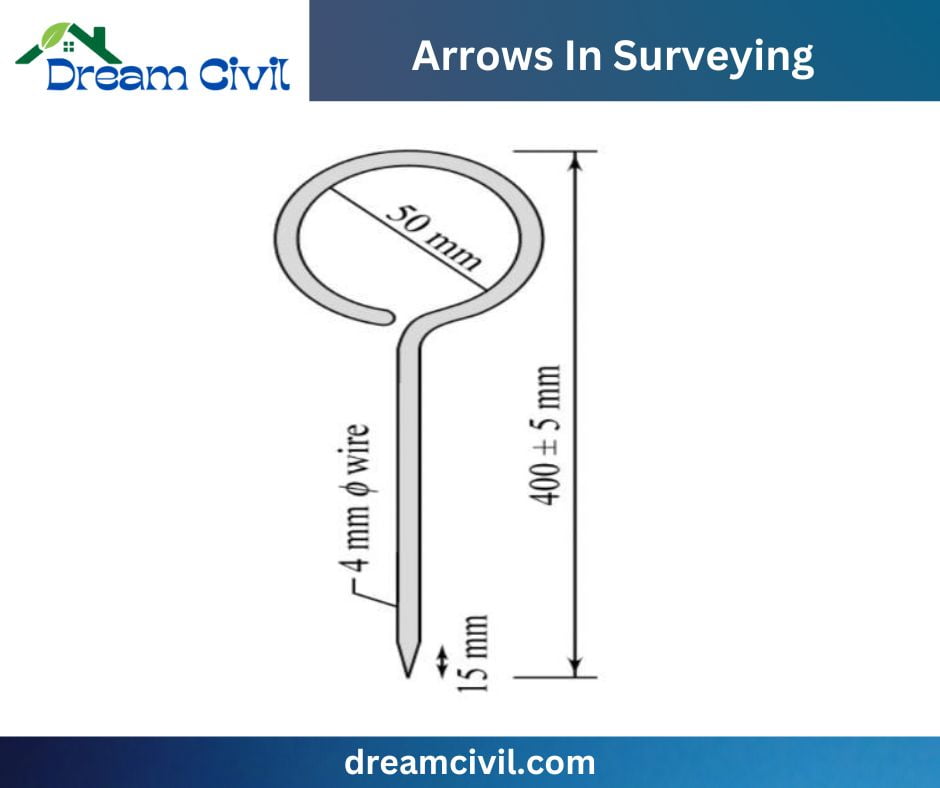Table of Contents
✓ Arrows in surveying are the marking pins primarily used in chain surveying. If the line to be measured is longer than a chain length, these are used to indicate the end of the chain.
After the end of each chain length, the arrow is inserted in the ground, but if the soil is hard, a scratch may be made with the pointed end of the arrow.
✓ They are 4 mm in diameter and have a minimum tensile strength of 700 N/mm².
✓ The length of arrows varies between 250-500 mm.
✓ As per IS 1842, the overall length of arrows is 400 mm with a 50 mm diameter loop.
✓ The white or red tape is tied to the arrows’ ring to increase the arrows’ visibility.
✓ In recent days, white or red painted arrows have been available in the market.

A. What Material Is Used to Make Surveying Arrows?
✓ Arrows are made of good-quality hardened and tempered steel wire, which is enameled ( mostly with black enamel).
B. What are the uses of arrows in surveying?
The uses of arrows in surveying are as follows:
i. It is used in surveying to mark boundaries and points.
ii. It is generally used in chain surveying to mark the end of the chain length.
C. What are the Advantages of Arrows In Surveying?
The advantages of Arrows in surveying are as follows:
i. It helps to locate the point in the ground while surveying a large field.
ii. It is lightweight and easy to handle.
iii. It is suitable for use in any weather conditions.
D. What are the Disadvantages of Arrows In Surveying?
The disadvantages of Arrows in Surveying are as follows:
a. It can be misplaced or lost.
b. Not suitable for large areas.
c. There is a high chance of errors.
E. How are Arrows different than Pegs?
Pegs are generally made up of wood. They are also used to locate points in the ground. Some differences between pegs and arrows are:
| S.N. | Arrows | Pegs |
| 1 | They are made up of steel. | They are mostly made up of wood. |
| 2 | They have one end pointed and another end bent into a loop. | They have one end tapered. |
| 3 | The standard length of arrows is 250 mm to 400 mm. | The standard length of pegs is 150 mm. |
| 4 | They are 4 mm in diameter. | They have sides of 25 mm to 30 mm. |
| 5 | They are primarily used in chain surveying. | They are used in all types of surveying. |
| 6 | They are used to mark the end of the chain length. | They are used to mark the endpoint of the survey line. |
Read More: Peg in Surveying
| Verified Article By Er. Madhu Krishna Poudel |

